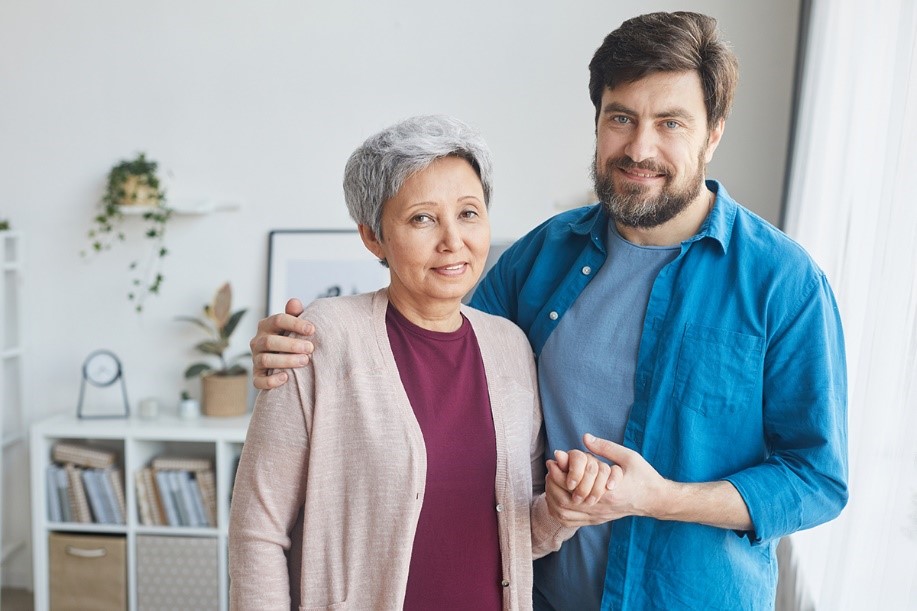
Hidden Hazards to Address
As your loved one ages, some areas of the home may pose greater risks. Stairs, for example, are one of the most common hidden hazards for seniors. Many seniors find climbing the stairs challenging and are at risk of losing their balance on them. Other common hazards include:
- Flooring like loose rugs
- Bathtubs or showers
- Narrow doorways that can’t accommodate wheelchairs
- Doors that are difficult to open
- Spaces that require stretching to reach
Many homes have hazards like these built in. To identify potential home dangers and risks to your loved one’s safety, observe their movements around the house. You can also use a free home assessment.
Common Home Modifications for Seniors
To keep an elderly person at home safely, you may need to make minor or major modifications to their house. Modifications that seniors often benefit from include changes as simple as:
- Installing lever-style handles on doors
- Lowering light switches
- Securing support bars strategically
- Adding lighting to improve visibility
- Selecting kitchen workspaces that can be used while seated

- Installing chair lifts on staircases
- Adding ramps to home entrances
- Widening doorways to allow wheelchair access
- Replacing bathtubs with walk-in showers
- Remodeling for one level living
More extensive modifications like these can significantly improve your loved one’s ability to enjoy their independence in the next season of life. Major home upgrades can also decrease the risk of falling and other potential causes of injury.
Getting Help from Contractors
Whether you live near your loved one or not, it is likely that you will need professional assistance to make some of the home modifications needed for your family member’s safety. Contractors commonly have experience assessing home safety needs and making the appropriate changes. Many are experts at building wheelchair accessible ramps and making other modifications. Fortunately, many home remodeling contractors will work with families using financing plans specially designed to help the aging population stay at home. Choose a contractor with specific experience adapting the home for seniors.
Paying for Modifications
Depending on the modifications your loved one’s home needs, the process of making home a safe place for independent living may be costly. The federal government’s eldercare branch offers several resources about financial assistance, grants, and repair funds for the aging. Local Area Agencies on Aging (AAA) groups are also likely to have information on special funds in order to help seniors live at home safely. Some cities and counties will provide these modifications at no or low cost.
Along with home modifications, home care may be part of creating a safer home for your loved one. Learn more in this free guide:{{cta(’37a508cb-3560-4088-87c4-bab7d85d9fb6′,’justifycenter’)}}






